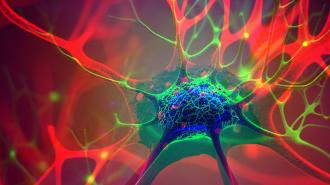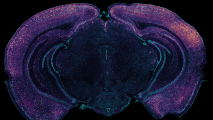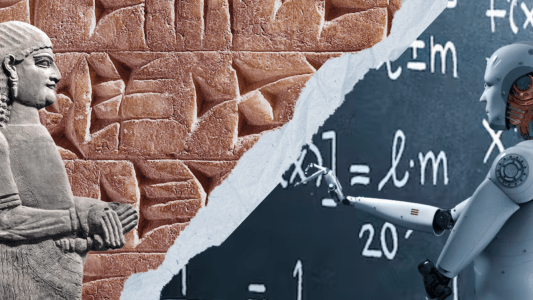The clinical evidence for using psychedelics to treat major depressive disorder, PTSD, addiction, and other mental health conditions is building.
But despite the growing pile of data, we do not know just how psychedelics might be helping. (This isn’t unusual, by the way — we still don’t really know why most antidepressants work, just that they do.)
One theory behind conditions like depression is that they’re caused by the breakdown of connections between brain cells.
Researchers have found, in multiple studies, that psychedelics can increase connections between cortical neurons — specifically, they spark growth of the tendril-y antennae on neurons, called dendrites, that catch signals from other brain cells. In theory, this may mean new connections being formed and strengthened, helping the brain to rewire itself.
Now, surprising new research out of UC Davis may have finally explained why psychedelics spark dendrite growth when other drugs, which activate the same targets in your neurons, do not — and it may be the key to their therapeutic value.
It’s a discovery that could be “potentially paradigm changing,” Bryan Roth, a distinguished professor of pharmacology at UNC-Chapel Hill who was not involved with the research, tells Freethink.
Many psychedelics and the neurotransmitter serotonin both activate the same receptor in brain cells: 5-HT2A.
Rewiring the brain: The first clues about how psychedelics may be physically altering neurons came from ketamine, which researcher Ron Duman’s lab at Yale showed could promote dendritic growth in mice. Subsequent research tied this growth to ketamine’s antidepressant effects.
In 2018, David E. Olson’s lab at UC Davis published a paper in Cell Reports showing that a variety of psychedelics (“like pretty much all the major ones you’ve heard of,” he says) were effective at promoting the growth of the cortical neuron dendrites.
Those findings have since been backed up and expanded upon by multiple labs and in multiple models, including neurons in a dish, in fruit flies, in mice, and, in 2021, in pigs.
Here’s the thing, though: all the research led to a very odd realization. If psychedelics spur neuronal growth, why is that the many other drugs that interact with the same receptor — including serotonin itself — do not?
“The goal of this study,” Olson says, “was to solve an enigma.”
Serotonin and psychedelics: Despite the many mysteries of how psychedelics do what they do, there has long been a consensus among scientists that one particular receptor on brain cells, called “5-HT2A,” is key.
The natural home for the neurotransmitter serotonin, 5-HT2A is activated by a variety of pharmaceutical drugs used to treat depression, migraines, and psychosis — as well as all of the popular psychedelic drugs: magic mushrooms, LSD, MDMA, DMT, ketamine.
“There is a ton of evidence that suggests that activation of the 5-HT2A receptor is what leads to the hallucinogenic effects of the drugs,” Olson, director of UC Davis’ Institute for Psychedelics and Neurotherapeutics and co-founder of Delix Therapeutics, tells Freethink.
Which raises the question again: since other drugs hitting the receptor don’t cause hallucinations, or neural growth, what’s special about psychedelics?
Now, new research by Olson and his colleagues, published in Science, shows that psychedelics, unlike serotonin, appear to act on 5-HT2A receptors contained within brain cells — not just the receptors on the outside.
Sparking growth in neurons may be key to psychedelics’ therapeutic ability. But why do these 5-HT2A activating drugs cause growth, when serotonin does not?
Location, location, location: The receptors in 5-HT2A’s family exist on the outside of most types of cells in the human body. Receptors like this are designed to help cells interact with molecules in the cell’s environment, doing any number of different functions.
But some older studies had suggested that cortical neurons had a unique arrangement, with 5-HT2A receptors on the inside, as well.
What Olson’s lab found was that serotonin does a very poor job of crossing the membranes of cortical neurons, making it incapable of activating the 5-HT2A receptors inside of them.
But psychedelics like psilocin and DMT are “greasier” than serotonin, allowing them to slip through the membrane and activate the receptors.
“Maybe the reason that serotonin cannot produce cortical neuron growth via the 5-HT2A receptor is because maybe it can’t actually access the 5-HT2A receptor,” Olson says.
The team tested their theory by artificially helping serotonin get into brain cells. Using methods like jolts of electricity and transport proteins to get serotonin into the cell, they were able to activate the interior receptors and cause neuron growth in vitro — like what they saw with psychedelics.
When they tested it on mice, they saw both neural growth and antidepressant effects in the animals.
(As an aside, it’s also long been known that the greasier a psychedelic, the less of it you need to cause an effect — this could possibly explain why.)
“It seems to overturn a lot about what we think should be true about how these drugs work,” Cornell neuroscientist Alex Kwan, who was not involved in the research, told ScienceNews. “Everybody, including myself, thought that [psychedelics] act on receptors that are on the cell surface.”
Serotonin cannot activate 5-HT2A receptors located inside of certain brain cells — but psychedelics can.
The upshot: It’s important to note that the study does not prove that activating 5-HT2A on the inside of cells or neural growth are responsible for the therapeutic effects of psychedelics.
But it does suggest they play a role, Olson says, and studies that knocked out the 5-HT2A receptor in mice have found that it eliminated the hallucinogenic, and some of the therapeutic, effects of psychedelics.
Finding out more about the basic pharmacological action of psychedelics could have important implications for drug development.
“Once we know the aspects of the drug’s effects that are beneficial, then we could potentially develop more targeted therapeutics,” Olson says.
Drugs that are more narrowly targeted, perhaps, could lead to higher efficacy and fewer side effects, unlocking a world of benefits for more patients in need.
We’d love to hear from you! If you have a comment about this article or if you have a tip for a future Freethink story, please email us at [email protected].





